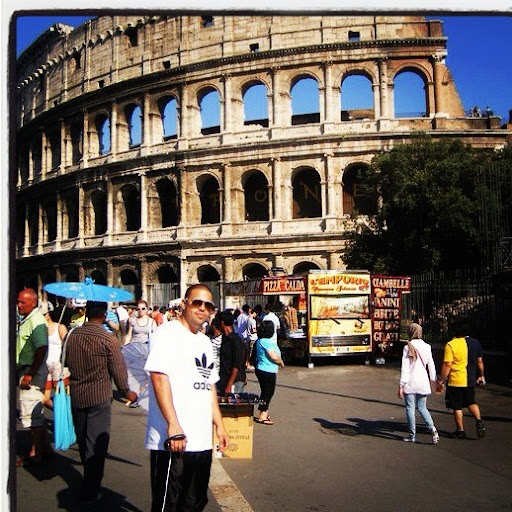Richard F Devito
age ~39
from Watertown, MA
- Also known as:
-
- Richard P Devito
- Ralph Devito
Richard Devito Phones & Addresses
- Watertown, MA
- Middletown, CT
- Wethersfield, CT
- Santa Monica, CA
- Long Beach Township, NJ
- East Northport, NY
- Farmington, CT
- Brookline, MA
- Boston, MA
Resumes

Director At Northeastern University
view sourceLocation:
Greater Boston Area
Industry:
Education Management

Richard Devito
view source
Richard Devito
view source
Richard Devito
view source
Richard Devito
view sourceName / Title
Company / Classification
Phones & Addresses
Owner
Devito Audio Labs
Computer Related Services
Computer Related Services
31 Brk Rd, Cherry Brook, MA 02493
Owner
Devito Auto Restoration
Ret Used Automobiles
Ret Used Automobiles
116 Irving St, Framingham, MA 01702
President
VAECO INC
Business Services at Non-Commercial Site
Business Services at Non-Commercial Site
11 Parkside Dr, Jamaica Plain, MA 02130
11 Parksdie Dr, Jamaica Plain, MA 02130
11 Parksdie Dr, Jamaica Plain, MA 02130
Managing
Devito 1315, LLC
470 Boston Post Rd, Cherry Brook, MA 02493
President
AMERICAN SOCIETY OF HOSPICE CARE, INC
President
EASTHAM WATERFRONT OWNERS ASSOCIATION, LET US SAVE OUR SHOR*
President, Director, Owner
JOB FAIRS, INC
Periodicals-Publishing/Printing · Periodical Publishers
Periodicals-Publishing/Printing · Periodical Publishers
470 Boston Post Rd, Weston, MA 02493
90 Love Ln, Weston, MA 02493
7818992702, 7818994900
90 Love Ln, Weston, MA 02493
7818992702, 7818994900
Treasurer
WESTON MEDICAL JOURNALS, INC
470 Boston Post Rd, Weston, MA 02493
90 Love Ln, Weston, MA 02493
90 Love Ln, Weston, MA 02493
Us Patents
-
Infrared Camera System
view source -
US Patent:20050082480, Apr 21, 2005
-
Filed:Aug 25, 2004
-
Appl. No.:10/925860
-
Inventors:Matthias Wagner - Cambridge MA, US
Ming Wu - Arlington MA, US
Nikolay Nemchuk - North Andover MA, US
Julie Cook - Newburyport MA, US
Richard DeVito - Saugus MA, US
Robert Murano - Melrose MA, US
Lawrence Domash - Conway MA, US -
Assignee:Aegis Semiconductor, Inc. - Wobum MA
-
International Classification:G01J005/00
-
US Classification:250338100
-
Abstract:An IR camera system includes an array of thermally-tunable optical filter pixels, an NIR source and an NIR detector array. The IR camera system further includes IR optics for directing IR radiation from a scene to be imaged onto the array of thermally-tunable optical filter pixels and NIR optics for directing NIR light from the NIR source, to the filter pixels and to the NIR detector arrays. The NIR source directs NIR light onto the array of thermally-tunable optical filter pixels. The NIR detector array receives NIR light modified by the array of thermally-tunable optical filter pixels and for produces an electrical signal corresponding to the NIR light the NIR detector array receives.
-
Infrared Camera System
view source -
US Patent:20070023661, Feb 1, 2007
-
Filed:Sep 19, 2006
-
Appl. No.:11/523420
-
Inventors:Matthias Wagner - Cambridge MA, US
Ming Wu - Arlington MA, US
Nikolay Nemchuk - North Andover MA, US
Julie Cook - Newburyport MA, US
Richard DeVito - Saugus MA, US
Robert Murano - Melrose MA, US
Lawrence Domash - Conway MA, US -
Assignee:RedShift Systems Corporation - Waltham MA
-
International Classification:G01J 5/00
-
US Classification:250338100
-
Abstract:An IR camera system includes an array of thermally-tunable optical filter pixels, an NIR source and an NIR detector array. The IR camera system further includes IR optics for directing IR radiation from a scene to be imaged onto the array of thermally-tunable optical filter pixels and NIR optics for directing NIR light from the NIR source, to the filter pixels and to the NIR detector arrays. The NIR source directs NIR light onto the array of thermally-tunable optical filter pixels. The NIR detector array receives NIR light modified by the array of thermally-tunable optical filter pixels and produces an electrical signal corresponding to the NIR light the NIR detector array receives.
-
Apparatus For Reactive Sputtering
view source -
US Patent:20070151842, Jul 5, 2007
-
Filed:Dec 14, 2006
-
Appl. No.:11/610665
-
Inventors:Richard DeVito - Saugus MA, US
Martin Klein - Bedford MA, US
Piero Sferlazzo - Marblehead MA, US -
Assignee:FLUENS CORPORATION - Billerica MA
-
International Classification:C23C 14/00
C23C 14/32 -
US Classification:204192100, 204298020
-
Abstract:A reactive sputtering system includes a vacuum chamber and a reactive ion source that is positioned inside the vacuum chamber. The reactive ion source generates a reactive ion beam from a reactant gas. A sputtering chamber is positioned in the vacuum chamber. The sputtering chamber includes a sputter source having a sputtering target that generates sputtering flux, walls that contain an inert gas, and a seal that impedes the reactant gas from entering into the sputtering chamber and that impedes inert gas and sputtered material from escaping into the vacuum chamber. A transport mechanism transports a substrate under the reactive ion source and through the sputtering chamber. The substrate is exposed to the reactive ion beam while passing under the reactive ion source and then is exposed to sputtering flux while passing through the sputtering chamber.
-
Deposition System With A Rotating Drum
view source -
US Patent:20120045588, Feb 23, 2012
-
Filed:Aug 17, 2011
-
Appl. No.:13/211884
-
Inventors:Richard DeVito - Jamaica Plain MA, US
-
Assignee:VAECO INC. - Jamaica Plain MA
-
International Classification:C23C 14/35
C23C 14/14
C23C 14/04
C23C 14/34 -
US Classification:427475, 42725528, 427569, 118723 R, 118720, 118715
-
Abstract:A deposition method comprises flowing a first gas into a metallization zone maintained at a first pressure. A second gas flows into a reaction zone maintained at a second pressure. The second pressure is less than the first pressure. A rotating drum includes at least one substrate mounted to a surface of the drum. The surface alternately passes through the metallization zone and passes through the reaction zone. A target is sputtered in the metallization zone to create a film on the at least one substrate. The film on the at least one substrate is reacted in the reaction zone.
-
Deposition System With Integrated Cooling On A Rotating Drum
view source -
US Patent:20200219704, Jul 9, 2020
-
Filed:Mar 18, 2020
-
Appl. No.:16/823046
-
Inventors:Richard DEVITO - Jamaica Plain MA, US
-
International Classification:H01J 37/32
C23C 14/14
C23C 14/12
C23C 14/54
C23C 14/50
C23C 14/00
H01J 37/34 -
Abstract:In one aspect, a system for depositing a film on a substrate is disclosed, which comprises at least one metallization source for generating metal atoms, and at least one reactive source for generating at least one reactive species. The system further includes an inner cooling cylinder and a substrate cylinder, where the inner cooling cylinder is fixedly positioned relative to the substrate cylinder, and the substrate cylinder at least partially surrounds the inner cooling cylinder. At least one mount is coupled to the substrate cylinder for mounting one or more substrates to the substrate cylinder.
-
Deposition System With Integrated Cooling On A Rotating Drum
view source -
US Patent:20190214234, Jul 11, 2019
-
Filed:Mar 15, 2019
-
Appl. No.:16/355405
-
Inventors:Richard DEVITO - Jamaica Plain MA, US
-
International Classification:H01J 37/32
C23C 14/12
H01J 37/34
C23C 14/00
C23C 14/50
C23C 14/14
C23C 14/54 -
Abstract:In one aspect, a system of depositing a film on a substrate is disclosed, which includes at least one metallization source for generating metal atoms, and at least one reactive source for generating at least one reactive ionic species. The system further includes a pair of inner and outer concentric cylinders, where the outer cylinder has first and second openings positioned relative to the metallization source and the reactive source to allow entry of the metal atoms and the reactive ionic species into a metallization region and a reaction region, respectively, between the two cylinders. At least one mount is coupled to the inner cylinder for mounting the substrate thereto such that said substrate is in radiative thermal communication with the inner surface of the outer cylinder, said inner cylinder being rotatable for moving the substrate between the two regions so as to expose the substrate alternatingly to said metal atoms and said reactive ionic species. Further, the outer cylinder includes at least one cooling channel through which a cooling fluid can flow for maintaining the inner surface of the outer cylinder at a temperature suitable for radiative cooling of the substrate.
-
Deposition System With Integrated Cooling On A Rotating Drum
view source -
US Patent:20170117119, Apr 27, 2017
-
Filed:Oct 21, 2016
-
Appl. No.:15/331091
-
Inventors:Richard DeVito - Jamaica Plain MA, US
-
International Classification:H01J 37/32
C23C 14/12
H01J 37/34
C23C 14/50
C23C 14/00
C23C 14/14
C23C 14/54 -
Abstract:In one aspect, a system of depositing a film on a substrate is disclosed, which includes at least one metallization source for generating metal atoms, and at least one reactive source for generating at least one reactive ionic species. The system further includes a pair of inner and outer concentric cylinders, where the outer cylinder has first and second openings positioned relative to the metallization source and the reactive source to allow entry of the metal atoms and the reactive ionic species into a metallization region and a reaction region, respectively, between the two cylinders. At least one mount is coupled to the inner cylinder for mounting the substrate thereto such that said substrate is in radiative thermal communication with the inner surface of the outer cylinder, said inner cylinder being rotatable for moving the substrate between the two regions so as to expose the substrate alternatingly to said metal atoms and said reactive ionic species. Further, the outer cylinder includes at least one cooling channel through which a cooling fluid can flow for maintaining the inner surface of the outer cylinder at a temperature suitable for radiative cooling of the substrate.
-
Deposition System With A Rotating Drum
view source -
US Patent:20140262765, Sep 18, 2014
-
Filed:May 23, 2014
-
Appl. No.:14/286894
-
Inventors:- Jamaica Plain MA, US
Richard DeVito - Jamaica Plain MA, US -
Assignee:Vaeco, Inc. - Jamaica Plain MA
-
International Classification:H01J 37/32
H01J 37/34 -
US Classification:20429811, 20429826, 20429816
-
Abstract:A deposition method comprises flowing a first gas into a metallization zone maintained at a first pressure. A second gas flows into a reaction zone maintained at a second pressure. The second pressure is less than the first pressure. A rotating drum includes at least one substrate mounted to a surface of the drum. The surface alternately passes through the metallization zone and passes through the reaction zone. A target is sputtered in the metallization zone to create a film on the at least one substrate. The film on the at least one substrate is reacted in the reaction zone.
Googleplus

Richard Devito

Richard Devito

Richard Devito

Richard Devito

Richard DeVito
view source
Richard DeVito
view source
Richard Devito
view source
Richard Devito
view source
Richard Devito
view source
Richard W. DeVito
view source
Richard DeVito
view source
Richard DeVito
view sourceClassmates

Richard Devito
view sourceSchools:
St. Mark School Brooklyn NY 1962-1964, Resurrection School Brooklyn NY 1965-1970
Community:
Christopher Weygand, Linda Brackman, Mary Beckwith

Richard Devito
view sourceSchools:
St. Frances of Rome School Bronx NY 1961-1965
Community:
Chuck Topinka, Maureen Gilmartin, Anthony Marutollo, Dan Petrucci, Theresa Brown, Jack Fiorelli, Grace Will, Joe Fata, Irene Miller, Patsy Albanese, Tony Delano

Richard Devito
view sourceSchools:
St. Frances of Rome School Bronx NY 1962-1965
Community:
Chuck Topinka, Anthony Marutollo, Dan Petrucci, Theresa Brown, Jack Fiorelli, Grace Will, Joe Fata, Richard Devito, Irene Miller, Patsy Albanese

Richard DeVito, Hinkley H...
view source
Richard Devito | Eastches...
view source
Richard Devito, Morgan Hi...
view source
Richard Devito, Everett H...
view source
St. Frances of Rome Schoo...
view sourceGraduates:
Richard Devito (1961-1965),
Sandie Francesconi (1975-1979),
Luis Torres (1977-1979),
Valerie Lopez (1977-1981),
Kimberly Pinto (1979-1980)
Sandie Francesconi (1975-1979),
Luis Torres (1977-1979),
Valerie Lopez (1977-1981),
Kimberly Pinto (1979-1980)
Myspace
Youtube
Get Report for Richard F Devito from Watertown, MA, age ~39







